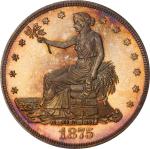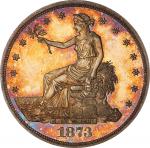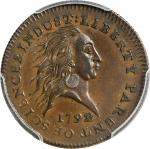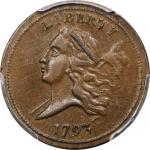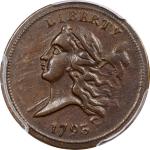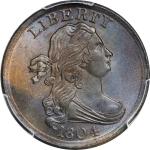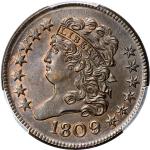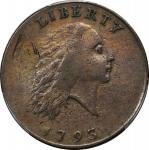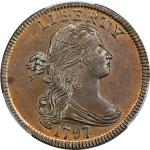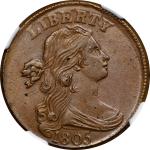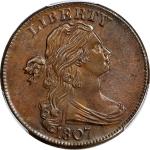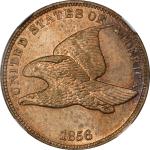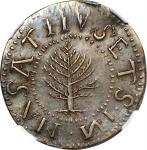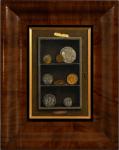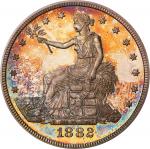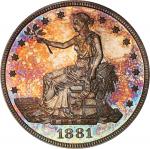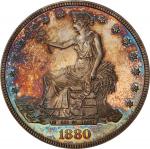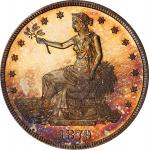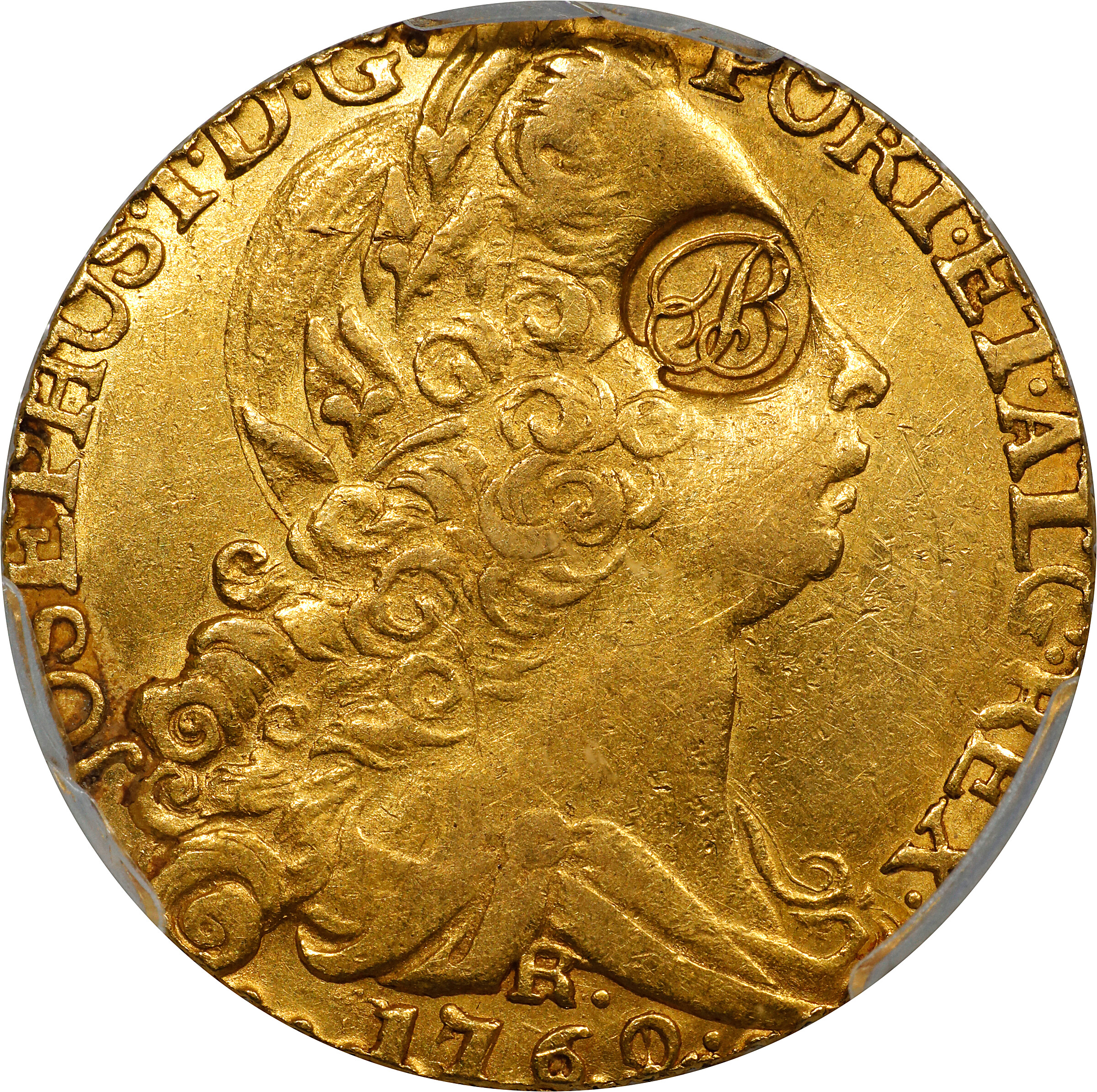(ca. 1784) John Burger Regulated Brazilian 1762/1-R 6400 Reis. Rio Mint. Countermarked JB. AU-55, Countermark Unc Details (PCGS).Clipped to 7 dwt, 10 grains (11.53 grams) and re-edged. Though originally struck in Brazil, in the name of the Portuguese King Joseph I, this 6400 reis was subsequently regulated to serve as an American $8 gold coin created to meet the demand for coinage that arose between the colonial period and the establishment of the U.S. Mint. The current weight, however, indicates clipping after Burgers work to meet a lighter West Indian standard than the 9 dwt (216 grain) standard to which Burger regulated. Round Burger mark, the more often seen of the two types (the other is oval). Neatly clipped into the tops of the letters in the obverse legend and flush to the peripheral elements of the arms on the reverse. The edge device is consistent and accompanied by a finely denticulated border added to the reverse. The coin is remarkably attractive, alternating between bright medium gold and warmer golden-orange, with tinges of intermingled olive also discernible. Hints of darker patina are evident at the left obverse and right reverse borders. The 6400 reis host coin, sometimes called a half Joe, shows a uniformly sharp strike and ideal centering. Close inspection with a loupe reveals traces of the 1 underdigit within the loop of the primary digit 2 in the date.<p>Burgers monogrammed JB hallmark, sometimes described as only a B, is sharply stamped in its usual location at the eye of the portrait. The mark is even, uniformly crisp, and features the small interior break at the lower left edge that is usually seen. There is minor distortion on the reverse opposite Burgers mark, but this has nicely blended into the overall aesthetic. Close inspection of the hallmark reveals a faint plug at the curves of the B, which will require magnification and some patience to discern, but is unmistakable once identified. Regulated gold scholar Ralph Gordon considered this style an assay plug, meant only to assess the fineness of the coin but not to modify the weight.<p><p>Burgers regulation of this coin would have been aligned to the 216 grains (9 dwt) standard valuing a half Joe at $8, which standard rose to prominence around the time of the American Revolution. We first encounter this standard proposed by the New York Chamber of Commerce on August 17, 1770, and it later went on to be adopted by the Second Continental Congress in April 1776. However, it would not be until it was officially recognized by the Bank of New York in May of 1784 that it was institutionalized as the governing standard throughout the Colonies.<p>This valuation would continue to be the accepted rate up through the establishment of the U.S. Mint, with the Congressional Act of February 9, 1793, calling for "the gold coins of France, Spain and the dominions of Spain [to be valued] at the rate of one hundred cents for every twenty seven grains and two-fifths of a grain." When calculated out, we see that this is virtually the same standard of 216 grains at $8 introduced two decades prior. However, the U.S. Mint would not strike its own gold coinage for circulation until 1795 and the acceptance of foreign gold coins like the 6400 reis was a crucial element of the growth in the early American economy. Regulators like Burger were essential in the maintenance of this haphazard monetary system, and the present piece is a hugely significant relic of this foundational era. Subsequent clipping reduced its weight to conform to a lighter West Indian standard, as above, and indeed Burgers marks on half Joes are also known alongside the marks of Martinique, Guadeloupe, and other islands.<p>John Burger worked in New York City after the British evacuation in November 1783, and was advertising his services as a coin regulator as early as January 1784. A close colleague of Ephraim Brasher, John Burger was a similarly influential figure, notable for declaring Alexander Hamiltons 1804 death a murder in his capacity as city coroner. Both Burger and Brasher belonged to the New York Gold and Silversmiths Society, and they worked within just a few blocks of each other in the Lower East Side of Manhattan adjacent to the East River. These men appear to have worked at the same time and to the same standard, but for different parties, as their marks often appear on the same coin, like two different stamps on a passport.<p>While the current countermark has long been familiar to scholars of the regulated gold series, the exact identity of the regulator was unclear until relatively recently. It was first attributed to the territory of Berbice (British Guiana) by Howland Wood in his pioneering <em>Coins of the West Indies: and the Sou Marque </em>(1915). Ralph Gordon recognized a connection to Brasher and correctly attributed the "Script B" mark to North America in his seminal <em>West Indies Countermarked Gold Coins</em> (1987). However, it wasnt until several years later that this mark would be confirmed as John Burger by William Swoger in a 1992 <em>Coin World</em> article, and then in a privately published 1999 monograph titled <em>Burgers Doubloons</em>.<p>Any piece of regulated gold is a rare prize, but a connection to John Burger and the economy of Americas first capital city makes this piece a particularly historic treasure. It is the quintessential survivor from this exclusive series, balancing expert production and exceptional preservation. It is sure to serve as a crowning jewel in an advanced cabinet of early American issues.



